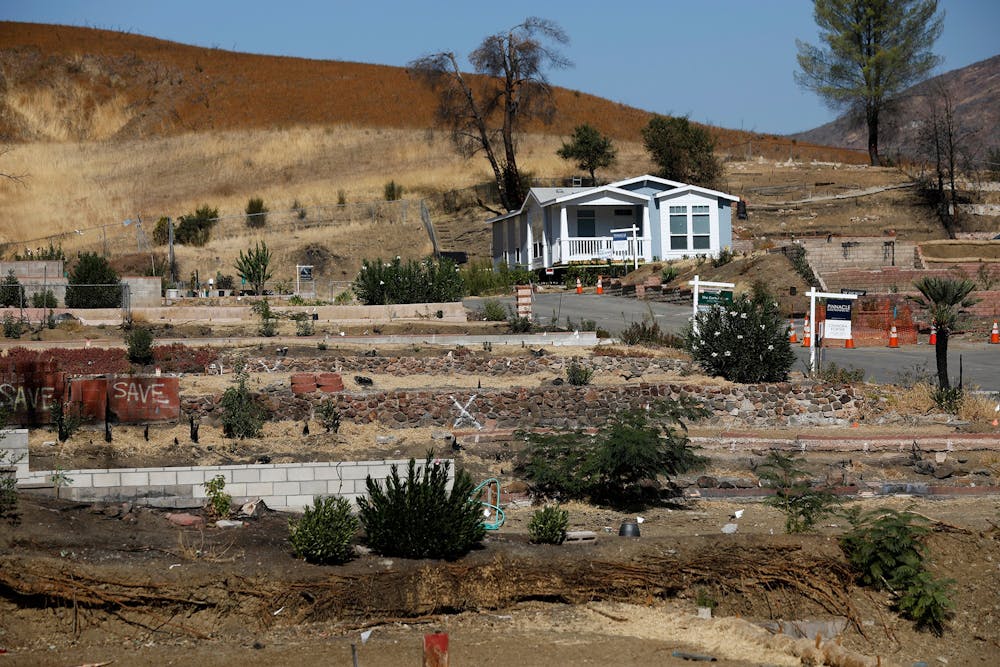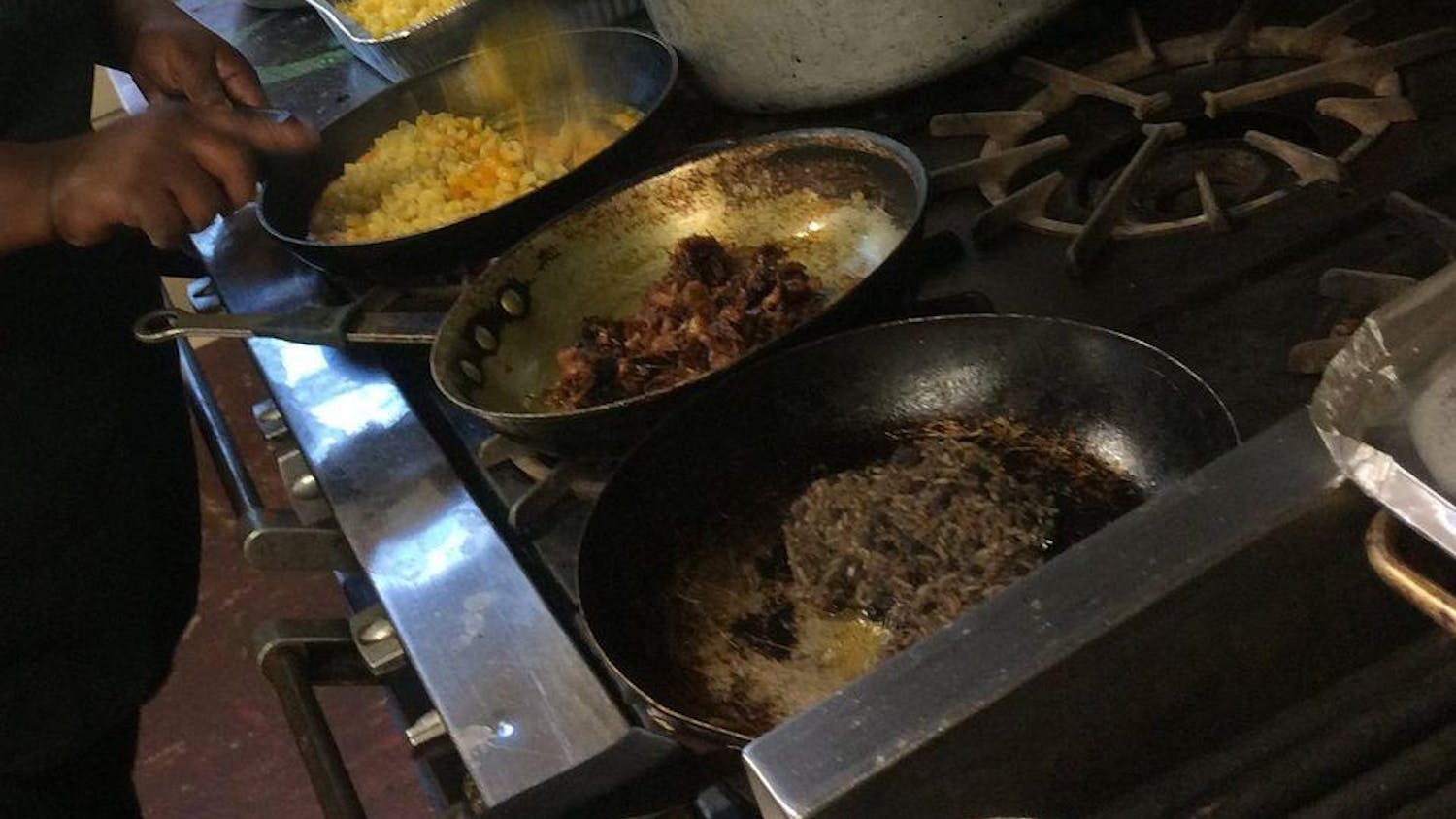By Sonja Sharp
Los Angeles Times
LOS ANGELES — Every day for a year, Marsha Maus has trekked up Mulholland Highway to tend to her garden.
Her yard — so green it looks neon — overflows with towering sunflowers and creeping vines. Her plot looks down on the 1960s-era section of Seminole Springs Mobile Home Park, a tidy subdivision tucked high in the Santa Monica Mountains.
Above it lies a wasteland.
"All this was torched — there was nothing left," Maus, 75, said as she surveyed the Janus-faced landscape from her burned-out lot. "Every day I come up here, it tears me up. We get a glimpse of hope, but then it's gone."
For victims of the Woolsey fire, recovery has been agonizingly slow. The blaze charred 151 square miles and 1,600 structures when it ripped through Malibu, the Santa Monica Mountains and eastern Ventura County a year ago, consuming mobile homes and movie stars' mansions in what would become one of the most destructive wildfires in California history.
In Seminole Springs alone, 110 homes burned. But unlike their neighbors in Malibu or Westlake Village, some of whom have turned to modular units as a quick way to rebuild, fire victims here have barely set foot on the road to return.
That's because the park lost not just homes, but the entire network of infrastructure that ran underneath them. Streets, storm drains, sewer systems, water mains, gas and electric lines — all were damaged or destroyed in the fire and its aftermath. Replacing them could take up to a year and would cost $10 million.
"We're still in the same place we were a year ago — there's nothing done," said Ester Marantz Bruce, a burned-out victim and a member of the park's embattled board of directors. "Insurance gave me money for a year of rent, but that money is over. We now need to rent homes for another year, and we all don't know how we will pay."
Marantz Bruce and others on the board say the park must replace its fire-ravaged infrastructure before the California Department of Housing and Community Development will allow new homes to be brought in — work they are struggling to finance. But with insurance money running out and burned-out lots languishing on the market, frustrated fire victims are pushing for a quicker fix.
The divide has pitted neighbor against neighbor in this tight-knit community. Resentment has mounted in recent weeks as plans for short-term repairs that might bring homes in sooner have foundered. On Facebook and Nextdoor, there is talk of betrayal.
"The meetings are getting tenser," said longtime resident Richard Lohmann, an outspoken opponent of the board's current plan. "The corporation and our eight board members are stuck on replacing everything — the rest of us want to move in."
It's an article of faith that rich communities and poor ones all burn the same in California's wildfires. In reality, poor ones tend to burn faster, and worse. This is particularly true in mobile home parks, where fires spread quickly and rebuilding is slow, experts said.
Statewide, more than 100 mobile home parks were affected by wildfires last year, according to the California Department of Housing and Community Development, which oversees 81% of the state's roughly 4,800 mobile home and "special occupancy" parks. Many of those that burned the year before remain empty even as neighboring tracts have rebuilt.
Residents "are often reliant on the park owners to rebuild the park after the fire before they may install a new home or repair a damaged home," department spokeswoman Alicia Murillo wrote in an email. "Due to the size of most parks, it can often take longer ... to rebuild their utility infrastructure."
In Seminole Springs, millions of dollars of structural damage to roads and utilities has slowed recovery to a crawl.
"It's kind of a perfect storm," said board member Jeremy Kerns. "Every time we find a solution, there's a new wrinkle."
But beneath the community's structural crisis lies an existential one: Unlike the vast majority of mobile home parks in the country, Seminole Springs is owned and run by its residents, who have worked together for decades to keep it affordable.
Now, they must grapple together with how to rebuild it, a process that has strained the foundations of a model that experts call "the gold standard" for mobile home parks and "the most secure form of investment the homeowners can make."
"Privately owned mobile home parks are one of our biggest sources of affordable housing, but they're also one of the most insecure," said Esther Sullivan, an assistant professor of sociology at the University of Colorado-Denver and an expert in mobile home parks. "Eighty percent of households in parks own the unit, but only 14% own the land underneath. You're living with insecurity inscribed into the land underneath you."
Seminole Springs was among the first parks in the country to collectivize, forming a nonprofit to purchase the land in 1986 after rent control expired in L.A. County. It was temporarily reinstated last year, and is expected to be made permanent later this month.
Of the half-dozen residents interviewed for this article, all were adamant they would not have moved to Seminole Springs if it were not mutually owned.
"It's a very desirable mobile home park because it's a co-op and all the residents own an equal share of the land, so you have a low monthly HOA payment," said Bracken Carter, a real estate agent and mother of three who has been living with her parents in Paradise Cove since losing her home in Seminole Springs.
Assessments at Seminole Springs run between $400 and $460 a month, less than a third of what residents pay at nearby private parks and a boon for retirees. But those same low rates have left the park vulnerable in the wake of the disaster.
"In any (cooperative) mobile home park, there's always a conflict between the members who would like to keep their rents low and the ... responsibility to collect enough money to properly maintain the place," said David Loop, vice president of resident-owned communities for the Golden State Manufactured Home Owners League. "In many homeowners associations, the reserves aren't built up like they should be."
A year after the Nov. 8, 2018, fire, Seminole Springs is still nowhere close to funding its rebuild, residents said.
"There's no physical reason we couldn't put our units back where they were before," said Eugene Donald Michael, a 91-year-old hydrogeologist whose home was among the first to burn. "The only work that should be done right now is restorative, taking us back to where we were the day before the Woolsey fire."
For those like him who plan to move back, every day that passes is a day he dips into the money he will need for his trailer. But those who've decided to leave are equally stranded. "For sale" signs dot the scorched landscape where debris has been removed, but without a clear timeline for recovery, buyers have shied from the park, Carter said.
"This is the time you wish you did have an owner of the park who would make this decision for everybody," the real estate agent said. "A park like Paradise Cove or (Oak Forest Estates in) Westlake, they're already ready to put homes back on.
The homeowners have the flexibility to do it their way. Whereas in Seminole Springs, we're stuck following what the corporation needs us to do, because we're all in it together."
Despite the park's slow recovery, many fire victims said they still support the cooperative.
"Right now we have strain, but the moment you give it over to some private entity, forget it," said Marantz Bruce, who is searching for a cheaper room to rent when her insurance money runs out this month. "We want our corporation to stay. But it's so hard not to lose hope."




